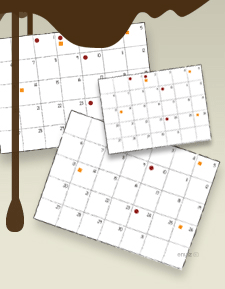|
THE NEW 7 WONDERS OF THE WORLD
The Pyramid at Chichén Itzá (before 800 A.D.) Yucatan Peninsula, Mexico
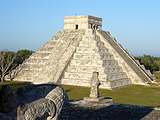
Chichén Itzá, the most famous Mayan temple city, served as the political and economic center of the Mayan civilization. Its various structures - the pyramid of Kukulkan, the Temple of Chac Mool, the Hall of the Thousand Pillars, and the Playing Field of the Prisoners can still be seen today and are demonstrative of an extraordinary commitment to architectural space and composition. The pyramid itself was the last, and arguably the greatest, of all Mayan temples.
Die Pyramide von Chichén Itzá (vor 800 n. Chr.) auf der mexikanischen Halbinsel Yucatán gilt als bedeutendste historische Tempelstadt der Maya-Zivilisation, die als politisches und wirtschaftliches Zentrum diente. Ihre unterschiedlichen Bauwerke, die Kukulcán-Pyramide, der Chac Mol-Tempel, die Halle der Tausend Säulen und der Ballspielplatz, kann man noch heute besichtigen. Sie sind beispielhaft für die damalige architektonische Meisterleistung. Die Pyramide selbst wurde als letztes gebaut und ist der bedeutendste aller Maya-Tempel.
..............................
Christus-Statue (1931) Rio de Janeiro, Brasilien
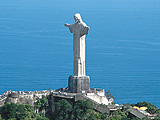
This statue of Jesus stands some 38 meters tall, atop the Corcovado mountain overlooking Rio de Janeiro. Designed by Brazilian Heitor da Silva Costa and created by French sculptor Paul Landowski, it is one of the worlds best-known monuments. The statue took five years to construct and was inaugurated on October 12, 1931. It has become a symbol of the city and of the warmth of the Brazilian people, who receive visitors with open arms.
Die 38-Meter-hohe Christus-Statue wurde auf dem Corcovado-Berg errichtet mit Blick auf Rio de Janeiro. Gestaltet von dem Brasilianer Heitor da Silva Costa and erbaut durch den französischen Bildhauer Paul Landowski, zählt die Statue zu den bekanntesten Bauwerken der Welt. Der Bau der Statue dauerte fünf Jahre. Sie wurde am 12. Oktober 1931 eingeweiht. Die Statue ist Symbol der Stadt und steht gleichzeitig für die Herzlichkeit der Brasilianer, welche die Gäste mit offenen Armen in Empfang nehmen.
.......................................
The Great Wall of China (220 B.C and 1368 - 1644 A.D.) China
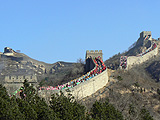
The Great Wall of China was built to link existing fortifications into a united defense system and better keep invading Mongol tribes out of China. It is the largest man-made monument ever to have been built and it is disputed that it is the only one visible from space. Many thousands of people must have given their lives to build this colossal construction.
Die Chinesische Mauer diente als zusammenhängende Grenzbefestigung. Sie verband verschiedene bereits bestehende Festungsanlagen miteinander, um China vor den einfallenden Mongolen-Stämmen zu schützen. Sie gilt als größtes Bauwerk, das jemals von Menschen Hand geschaffen wurde und dass es das einzige Monument ist, das auch noch vom Weltall zu sehen ist, ist umstritten. Tausende von Menschen ließen ihr Leben bei der Konstruktion dieses monumentalen Bauwerks.
.......................................
Machu Picchu (1460-1470), Peru
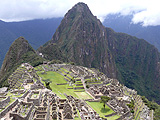
In the 15th century, the Incan Emperor Pachacútec built a city in the clouds on the mountain known as Machu Picchu ("old mountain"). This extraordinary settlement lies halfway up the Andes Plateau, deep in the Amazon jungle and above the Urubamba River. It was probably abandoned by the Incas because of a smallpox outbreak and, after the Spanish defeated the Incan Empire, the city remained 'lost' for over three centuries. It was rediscovered by Hiram Bingham in 1911.
Im 15. Jahrhundert erbaute der Inka-Herrscher Pachacutec eine Stadt in den Wolken auf dem Berg Machu Picchu ("alter Gipfel"). Diese außergewöhnliche Siedlung liegt auf halbem Wege zu dem Anden-Plateau, mitten im Amazonas-Urwald und oberhalb des Urubamba Flusses. Die Inka verließen die Stadt bei Ausbruch der Pocken-Krankheit, und nachdem die Spanier das Inka-Reich erobert hatten, geriet die Stadt über drei Jahrhunderte lang in Vergessenheit. Erst Hiram Bingham entdeckte sie 1911 wieder.
..............................................
Petra (9 B.C. - 40 A.D.), Jordan
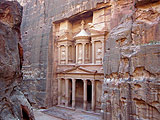
On the edge of the Arabian Desert, Petra was the glittering capital of the Nabataean empire of King Aretas IV (9 B.C. to 40 A.D.). Masters of water technology, the Nabataeans provided their city with great tunnel constructions and water chambers. A theater, modelled on Greek-Roman prototypes, had space for an audience of 4,000. Today, the Palace Tombs of Petra, with the 42-meter-high Hellenistic temple facade on the El-Deir Monastery, are impressive examples of Middle Eastern culture.
Am Rande der arabischen Wüste, war Petra die prächtige Hauptstadt des Nabatäerreiches von König Aretas IV (9 v. Chr. bis 40 n. Chr.). Die Nabatäer waren Meister der Wassertechnik und statteten ihre Stadt mit großen Kanaltunneln und Wasserkammern aus. Ein dem griechisch-romanischen Prototyp nachempfundenes Theater bot Platz für 4.000 Zuschauer. Heute sind die Grabtempel von Petra mit der 42-Meter-hohen hellenistischen Tempelfassade des Ed-Deir Felsengrabes, ein eindrucksvolles Beispiel des Kulturerbes des Nahen Ostens.
.....................................
The Roman Colosseum (70 - 82 A.D.) Rome, Italy
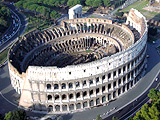
This great amphitheater in the centre of Rome was built to give favors to successful legionnaires and to celebrate the glory of the Roman Empire. Its design concept still stands to this very day, and virtually every modern sports stadium some 2,000 years later still bears the irresistible imprint of the Colosseum's original design. Today, through films and history books, we are even more aware of the cruel fights and games that took place in this arena, all for the joy of the spectators.
Dieses eindrucksvolle Amphitheater im Zentrum Roms wurde erbaut, um erfolgreiche Legionäre zu ehren und die Erfolge des Römischen Reiches zu feiern. Das Baukonzept hat heute noch Gültigkeit. In praktisch jedem modernen Sportstadium ist der Einfluss des Kolosseums selbst nach 2.000 Jahren noch sichtbar. Heute wissen wir durch Filme und Geschichtsbücher von den grausamen Kämpfen und Spielen, die in diesem Stadion zur Unterhaltung der Zuschauer stattfanden.
......................................
The Taj Mahal (1630 A.D.) Agra, India
This immense mausoleum was built on the orders of Shah Jahan, the fifth Muslim Mogul emperor, to honor the memory of his beloved late wife. Built out of white marble and standing in formally laid-out walled gardens, the Taj Mahal is regarded as the most perfect jewel of Muslim art in India. The emperor was consequently jailed and, it is said, could then only see the Taj Mahal out of his small cell window.
Dieses gewaltige Mausoleum ließ der fünfte islamische Großmogul Shah Jahan zum Gedenken an seine geliebte Hauptfrau errichten. Ganz in weißem Marmor gehalten, gilt der Taj Mahal als Perle der islamischen Kunst Indiens. Der Herrscher wurde später gefangen genommen und konnte der Sage nach- aus dem schmalen Fenster seiner Gefangenenzelle nur auf den Taj Mahal blicken.
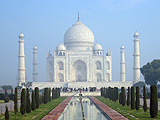
| Create Date : 08 กรกฎาคม 2550 |
|
0 comments |
| Last Update : 8 กรกฎาคม 2550 21:48:43 น. |
| Counter : 1992 Pageviews. |
|
 |
|



